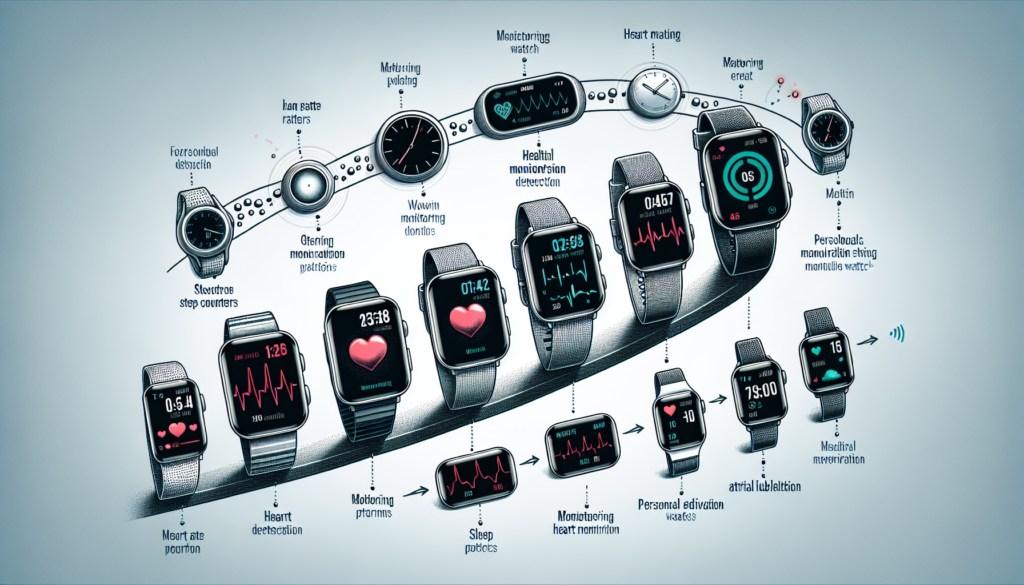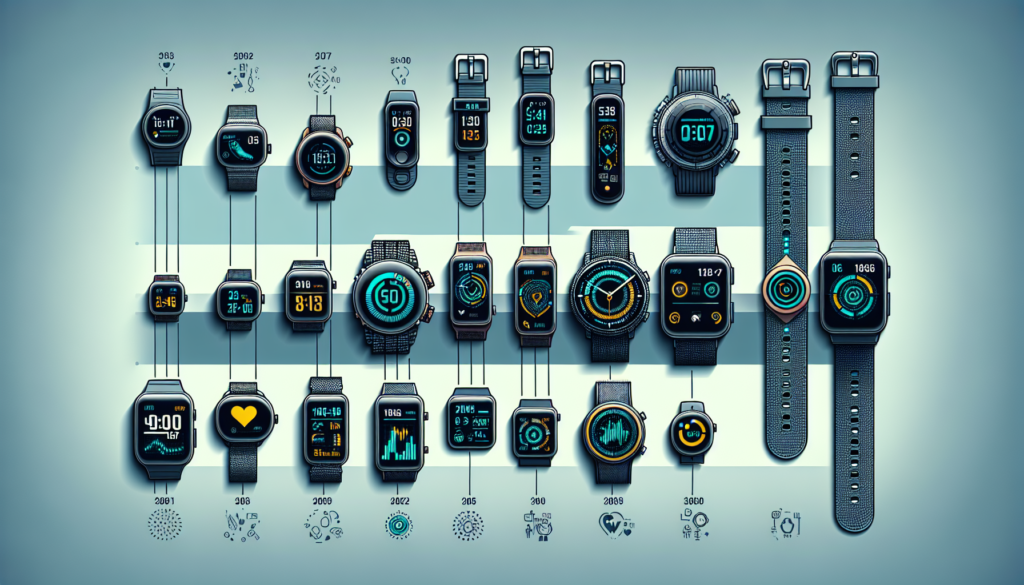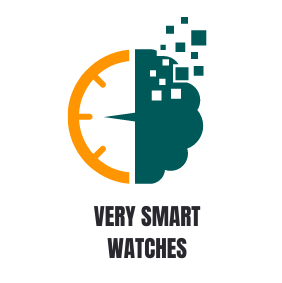In this article, you will discover the fascinating journey of health monitoring watches. These incredibly smart devices have revolutionized the way we keep track of our health and wellness. From basic step counters to advanced heart rate monitors and sleep trackers, health monitoring watches offer a wide range of features to help us lead healthier lives. We will explore the evolution of these watches, their benefits, and guide you in making smart purchasing decisions. So, get ready to delve into the world of health monitoring watches and unlock the potential of technology to enhance your well-being.

The Evolution of Health Monitoring Watches
1. Introduction to Health Monitoring Watches
Health monitoring watches have emerged as revolutionary devices that enable individuals to track and manage their health in real-time. These watches are equipped with various sensors and functionalities designed to monitor and gather data on important health indicators, such as heart rate, sleep patterns, activity levels, and more. By providing users with detailed insights into their health and well-being, these watches have become a valuable tool for personal health management.
What are Health Monitoring Watches?
Health monitoring watches, also known as smartwatches or fitness trackers, are wearable devices equipped with sensors and technologies that enable the monitoring of vital health parameters. These watches are typically worn on the wrist and offer a wide range of features beyond just timekeeping. They can track heart rate, sleep patterns, physical activity, and even provide notifications and alerts.
Importance of Health Monitoring
Monitoring one’s health is crucial in maintaining overall well-being and preventing potential health issues. Health monitoring watches play a vital role in providing individuals with constant access to their health data, empowering them to make informed decisions about their lifestyle choices and seek medical assistance when necessary. By monitoring key parameters such as heart rate, sleep quality, and activity levels, these watches enable individuals to proactively manage their health.
Benefits of Health Monitoring Watches
Health monitoring watches offer numerous benefits to individuals looking to improve their health and well-being. Some of the key benefits include:
- Real-time data: These watches provide individuals with immediate access to their vital health data, allowing them to make timely decisions and take necessary actions.
- Personalized insights: The data collected by health monitoring watches can be analyzed to provide personalized insights into an individual’s health trends, helping them understand their unique patterns and make informed adjustments.
- Motivation and accountability: Many health monitoring watches come with features such as activity tracking and goal setting, which can help individuals stay motivated in achieving their fitness goals and hold themselves accountable.
- Early detection of health issues: Through continuous monitoring, health monitoring watches can detect early signs of potential health issues, allowing individuals to seek medical attention in a timely manner.
2. Early Health Monitoring Technologies
Before the emergence of health monitoring watches, early attempts at health monitoring were limited to specialized medical equipment used in clinical settings. These devices were typically bulky and expensive, limiting their accessibility to the general population. However, with advancements in technology, health monitoring began to evolve and become more accessible to the masses.
Early Attempts at Health Monitoring
Early attempts at health monitoring involved the use of standalone devices such as heart rate monitors and pulse oximeters. These devices provided limited functionality and were primarily used by athletes and individuals with specific health conditions. However, their size and lack of portability restricted their widespread adoption.
Introduction of Heart Rate Monitors
One of the significant advancements in early health monitoring was the introduction of heart rate monitors. These devices, usually worn around the chest, could measure an individual’s heart rate during exercise or physical activities. Heart rate monitors laid the foundation for incorporating heart rate monitoring into future health monitoring watches.
Advancements in Pulse Oximetry
Another milestone in early health monitoring was the development of pulse oximetry technology. Pulse oximeters were introduced to measure the oxygen saturation levels in an individual’s blood. This technology played a crucial role in enabling accurate measurements of blood oxygen levels, which later became a standard feature in health monitoring watches.
3. Development of Health Monitoring Watches
As technology continued to advance, the integration of health monitoring sensors into watches became a reality. This development paved the way for the introduction of wrist-worn wearables that provided a comprehensive approach to health tracking and management.
Integration of Health Monitoring Sensors into Watches
The integration of health monitoring sensors, such as heart rate monitors and accelerometers, into watches was a significant breakthrough in the development of health monitoring watches. This allowed individuals to wear a single device on their wrist, eliminating the need for multiple standalone health monitoring devices.
Introduction of Wrist-worn Wearables
With the integration of health monitoring sensors into watches, wrist-worn wearables began to gain popularity. These wearable devices offered a range of functionalities beyond health monitoring, such as notifications, smartphone integration, and customizable watch faces. The convenience of having health monitoring capabilities on one’s wrist contributed to the widespread adoption of these devices.
Health Monitoring Features Added to Fitness Trackers
Fitness trackers, initially focused on activity tracking, started incorporating health monitoring features such as heart rate monitoring and sleep tracking. This evolution made fitness trackers more comprehensive health monitoring devices, attracting a wider audience interested in managing their overall health and fitness.

4. Key Features and Functionalities
Health monitoring watches come equipped with various key features and functionalities that enable users to track and manage their health effectively. These features include:
Heart Rate Monitoring
One of the fundamental features of health monitoring watches is heart rate monitoring. By continuously tracking heart rate, these watches provide insights into the intensity of workouts, measure resting heart rate, and identify irregularities that may require medical attention.
Pulse Oximetry
Pulse oximetry measures the oxygen saturation levels in the blood. This feature enables health monitoring watches to assess overall respiratory health and provide valuable information about sleep quality and breathing patterns.
Sleep Tracking
Sleep tracking allows individuals to monitor their sleep patterns and quality. Health monitoring watches can provide insights into the amount of time spent in different sleep stages, detect disruptions during sleep, and offer recommendations for improving sleep habits.
Activity and Fitness Tracking
Health monitoring watches enable users to track their physical activity levels, steps taken, distance covered, and calories burned. These features encourage individuals to adopt an active lifestyle and set fitness goals to improve their overall well-being.
GPS Tracking
Many health monitoring watches are equipped with GPS capabilities, allowing users to track outdoor activities accurately. This feature enables individuals to monitor their running or cycling routes, measure distance, and analyze performance metrics.
EKG/ECG Monitoring
Some advanced health monitoring watches now offer EKG/ECG monitoring, which measures the electrical activity of the heart. This functionality can help detect irregular heart rhythms, such as atrial fibrillation, and provide valuable insights for individuals with cardiovascular conditions.
Blood Pressure Monitoring
Certain health monitoring watches can measure blood pressure, providing individuals with a convenient way to monitor and manage hypertension. These watches use advanced sensors and algorithms to estimate blood pressure accurately.
5. Advancements in Health Monitoring Technology
As technology continues to evolve, health monitoring watches are incorporating more advanced features and functionalities to provide users with comprehensive health insights. Some of the recent advancements include:
Continuous Glucose Monitoring
Continuous glucose monitoring is a significant breakthrough in health monitoring technology. By integrating blood glucose monitoring into health monitoring watches, individuals with diabetes can conveniently monitor their glucose levels throughout the day without invasive procedures.
Fall Detection and Emergency Alerts
Some health monitoring watches now come with fall detection capabilities. These watches can detect sudden falls and send emergency alerts to predefined contacts, ensuring prompt medical assistance in case of accidents or emergencies.
Stress and Emotional Well-being Tracking
Recognizing the impact of stress on overall health, health monitoring watches now incorporate features to track stress levels and provide recommendations for managing stress. These watches utilize sensors to monitor heart rate variability and other indicators of stress.
Temperature Monitoring
Temperature monitoring has also been incorporated into health monitoring watches, allowing individuals to track their core body temperature. This feature can be particularly useful in detecting early signs of illnesses such as fever or monitoring changes in body temperature during exercise.
Skin Health Monitoring
Advanced health monitoring watches now offer skin health tracking, which can identify potential skin issues and provide personalized recommendations for skincare. These watches use sensors to assess factors such as UV exposure, moisture levels, and skin temperature.
6. Integration with Smartphones and Apps
To enhance the user experience and provide seamless connectivity, health monitoring watches have been designed to integrate with smartphones and companion apps.
Seamless Connectivity with Smartphones
Most health monitoring watches can be paired with smartphones through Bluetooth or other wireless technologies. This connectivity enables users to receive call and message notifications, control music playback, and access additional features or settings through their smartphones.
Companion Apps for Data Analysis and Insights
Companion apps play a crucial role in enhancing the functionality of health monitoring watches. These apps allow users to sync their health data from their watches, analyze trends, set goals, and receive personalized recommendations based on their health metrics.
Integration with Health Platforms and EHR Systems
Health monitoring watches can integrate with popular health platforms and electronic health record (EHR) systems, providing individuals the option to share their health data with healthcare professionals. This integration enables healthcare providers to have a comprehensive view of their patients’ health, facilitating more personalized care and treatment recommendations.
7. Challenges and Limitations
While health monitoring watches offer a multitude of benefits, there are some challenges and limitations to consider.
Accuracy and Reliability Issues
The accuracy and reliability of health monitoring watches can vary. Factors such as sensor quality, placement on the wrist, and individual variations can impact the accuracy of measurements. It is essential for users to understand the limitations of these devices and consult healthcare professionals for a more precise assessment of their health.
Battery Life and Charging
Health monitoring watches are powered by rechargeable batteries, which can limit their continuous monitoring capabilities. Depending on usage and features enabled, these watches may require frequent charging, which could be inconvenient for some users.
User Privacy and Data Security
The collection and storage of personal health data raise concerns about privacy and data security. Manufacturers and developers of health monitoring watches must implement robust privacy measures and encryption protocols to protect user data from unauthorized access or breaches.
Compatibility with Different Operating Systems
Not all health monitoring watches are compatible with every smartphone operating system. Users must ensure compatibility between their chosen watch and smartphone operating system to ensure seamless connectivity and functionality.
Cost and Affordability
The cost of health monitoring watches can vary significantly depending on the brand, features, and technology incorporated. Some advanced models may be expensive and may not be accessible to everyone. Affordability remains a challenge in ensuring widespread adoption of these devices.
8. Popular Health Monitoring Watch Brands
Several brands have gained popularity in the health monitoring watch market. Here are some of the most well-known brands:
Apple Watch
The Apple Watch has become synonymous with health and fitness tracking. With an extensive range of health monitoring features, seamless connectivity with iPhones, and a robust ecosystem of apps, the Apple Watch offers a comprehensive health monitoring experience.
Fitbit
Fitbit is a pioneer in the fitness tracking industry and offers a wide range of health monitoring watches. Known for their accuracy and user-friendly interface, Fitbit watches provide comprehensive health insights and personalized recommendations.
Samsung Galaxy Watch
Samsung’s Galaxy Watch series combines style and functionality, offering an array of health monitoring features. These watches are compatible with both Android and iOS devices and provide seamless integration with Samsung smartphones.
Garmin
Garmin specializes in GPS technology and offers a range of health monitoring watches designed for sports and outdoor enthusiasts. These watches provide accurate tracking of various health metrics and offer features tailored to athletes and fitness enthusiasts.
Withings
Withings focuses on providing health monitoring watches that seamlessly integrate into users’ daily lives. With elegant designs and advanced health tracking capabilities, Withings watches offer a combination of style and functionality.
10. Conclusion
The evolution of health monitoring watches has revolutionized personal health management. From early attempts at health monitoring to the integration of advanced sensors, these watches have become essential tools in monitoring and managing one’s health. The comprehensive features and functionalities offered by health monitoring watches enable individuals to gain insights into their health, make informed decisions, and improve their well-being. With continuous advancements in technology and the integration of additional health monitoring capabilities, the future of health monitoring watches holds promising prospects for enhancing personal health management.

